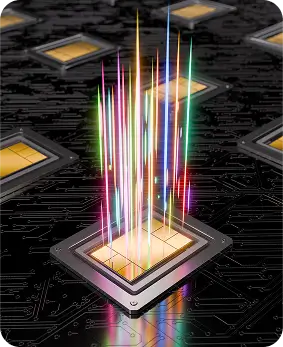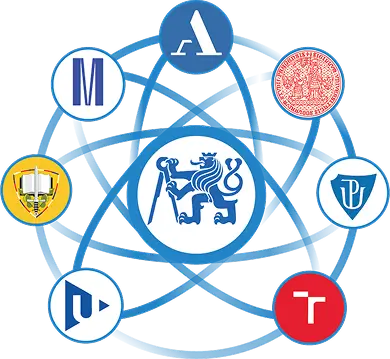
Quantum Innovation Center
THE CZECH REPUBLIC
Quantum Innovation Centers (QIC) are strategic initiatives focused on the development and application of quantum technologies at regional, national, and global levels. QIC connects academic institutions, research organizations, government laboratories, and industry, providing them with direct access to IBM's most advanced quantum computers and tools.
News & Media

Quantum Innovation Centers serve as regional hubs for education, research, development, and deployment of quantum computing, offering members access to IBM's quantum technologies and supporting them in their advanced use.
Learn moreAbout Quantum Computer
A quantum computer is a computer that harnesses the principles of quantum mechanics to perform computations, leveraging concepts like superposition and entanglement to solve complex problems faster than classical computers.
Instead of using bits (which can be 0 or 1), quantum computers use qubits, which can exist in a superposition of 0 and 1 simultaneously, allowing them to explore multiple possibilities at once.

Access to the most powerful quantum technologies
Members of the QIC have dedicated online access to the latest and most powerful quantum computers (currently 156 qubits, with the smallest being 127 qubits). Each time IBM launches a new and more powerful technology, QIC members are the first to gain access and begin using it.
To solve real-world problems and search for algorithms that can demonstrate Quantum Advantage—that is, a clear benefit over classical computers—it is necessary to use quantum computers with at least 100 qubits.
See the current IBM roadmap

What is QIC?
Quantum Innovation Centers represent key hubs for the development of quantum technologies, built on four main pillars:
- Research & Development
- Quantum as a Tool
- Workforce Enablement
- Ecosystem Development
- Universities: University of Tokyo, USC, University of Melbourne
- Research Institutions: CERN, Oak Ridge National Laboratory
- Government Organizations: Los Alamos, STFC UK
- The total number of members connected to the quantum network is nearly 300.

Why QIC was established?
- Acceleration of research in key areas
- Support for the education of future experts
- Preparation for the era of quantum utility
- Economic development of regions

How many QICs exist and what is the total number of members?
Among the 40+ Quantum Innovation Centers are:
- Universities: University of Tokyo, USC, University of Melbourne
- Research Institutions: CERN, Oak Ridge National Laboratory
- Government Organizations: Los Alamos, STFC UK
- The total number of members connected to the quantum network is nearly 300.
Benefits of QIC Membership
- Priority access to IBM's most advanced quantum systems
- Collaboration opportunities with leading academic, industrial, and governmental partners
- Participation in cutting-edge research and co-development of quantum algorithms
- Training and education programs for students, researchers, and professionals
- Support for workforce development in quantum computing
- Contribution to shaping the global quantum ecosystem

Ecosystem Development
QIC also plays a key role in developing the local ecosystem, enabling organizations to conduct large-scale education, build local quantum research teams, explore promising use cases, support the nationwide growth of quantum computing, and develop real-world quantum applications. Most importantly, it fosters the sharing of experiences and best practices — all within the framework of open-source solutions.

International community of quantum experts
QIC members are also part of IBM's international network of quantum experts, which connects QIC participants from around the world. This gives members access to research and development materials created by other members of the network. It also provides opportunities to participate in global activities and events where the broader community shares its experiences in the field.
Currently, the network includes 260+ members—including S&P 500 companies, universities, startups, and others. It is the largest network of its kind in the world.
